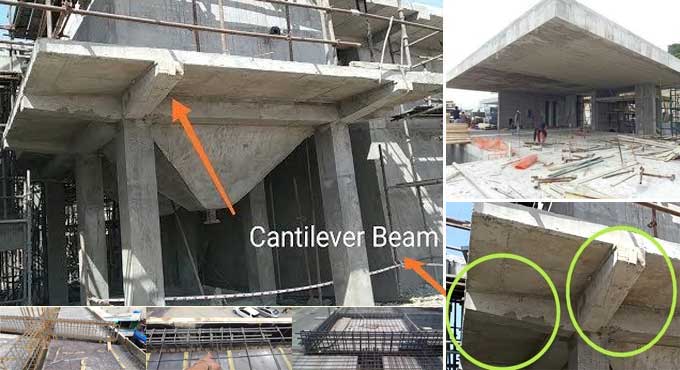NEWS | SOFTWARE | SHEET
An Introduction to the Cantilever Beam & its Applications
The beam is cantilevered out from its support, allowing it to overhang and hold weight without additional support in the middle. This design is often used in construction, engineering, and architecture to create a wide range of structures, including bridges, balconies, and building facades.
Cantilever beams are able to withstand significant amounts of stress and strain due to their unique design. The majority of the weight of the beam is carried by the support at the fixed end, while the free end is able to rotate and move slightly under load. This allows the beam to absorb and distribute the load evenly, making it less likely to fail or collapse.
Cantilever Beam Design
There are several factors that must be considered when designing a cantilever beam, including the type and strength of the material used the size and shape of the beam, and the expected load it will need to bear. Engineers and architects use specialized software and calculations to determine the optimal design for a cantilever beam based on these factors.
- Loads: The first step in designing a cantilever beam is to determine the loads that the beam will be subjected to. This includes the type, size, and location of the loads.
- Material: The material that the beam is made of will affect its stiffness and strength. Common materials used for cantilever beams include steel, concrete, and wood.
- Cross-sectional shape: The shape of the cross-section of the beam will affect its stiffness and strength. Common shapes for cantilever beams include rectangular, circular, and I-shaped beams.
- Deflection: The deflection of the beam under the applied loads should be checked to ensure that it does not exceed the acceptable limits for the intended use of the beam.
- Strength: The beam should be designed to have sufficient strength to support the applied loads without failing. This can be checked using strength of materials principles and design codes.
- Cost: The cost of the beam should be considered in the design process. This includes the cost of the material and the fabrication and installation of the beam.
There are several design codes that can be used to help guide the design of cantilever beams, including the International Building Code (IBC) and the American Institute of Steel Construction (AISC) Manual of Steel Construction.
Cantilever Beam Structural Behavior
A cantilever beam is a structural element that extends horizontally and is supported on one end. When a load is applied to the unsupported end of the cantilever beam, the beam will deflect, or bend, due to the force of the load. The amount of deflection will depend on the stiffness of the beam and the size and location of the load.
Materials
The structural behavior of a cantilever beam can be analyzed using the principles of statics and mechanics of materials. When the beam is subjected to a transverse load (a load perpendicular to the longitudinal axis of the beam), the beam will experience bending and shear stresses. The bending stress is caused by the internal moment, or torque, in the beam, while the shear stress is caused by the internal force in the beam.
The structural behavior of a cantilever beam can also be affected by the material properties of the beam. For example, a beam made of a stiffer material will experience less deflection than a beam made of a less stiff material when subjected to the same load.
Moment-curvature Relationship
The deflection of the beam can be calculated using the equation for the bending of a beam, which is based on the moment-curvature relationship of the beam. The moment-curvature relationship describes the relationship between the internal moment in the beam and the curvature of the beam.
Merits of Cantilever Bridge
- There is no need for support on the opposite side of a cantilever beam.
- Cantilever beams create a negative bending moment that counterbalances the positive bending moment.
- The construction of cantilever beams is simple.
Demerits of Cantilever Bridge
- A cantilever beam is subjected to large deflections.
- A cantilever beam is subjected to a larger moment.
- Stability of the structure depends on a strong fixed support or back span.
Cantilever Beams Uses
Cantilever beams have a wide range of applications in construction and engineering. They are often used to create balconies, mezzanines, and other structures that need to extend out from a building or other support.
They are also used in bridge design, where they are able to span large distances without the need for additional support in the middle. In addition, cantilever beams are often used in the construction of retaining walls, and are a key element in the design of many types of cranes and other heavy machinery.
To get more details, go through the following video tutorial.
Lecturer: CIVIL 360Degree
Overall, cantilever beams are a versatile and essential element in the field of construction and engineering. They allow for the creation of structures that are strong, stable, and able to withstand significant loads, making them an essential part of many types of building and infrastructure projects.


